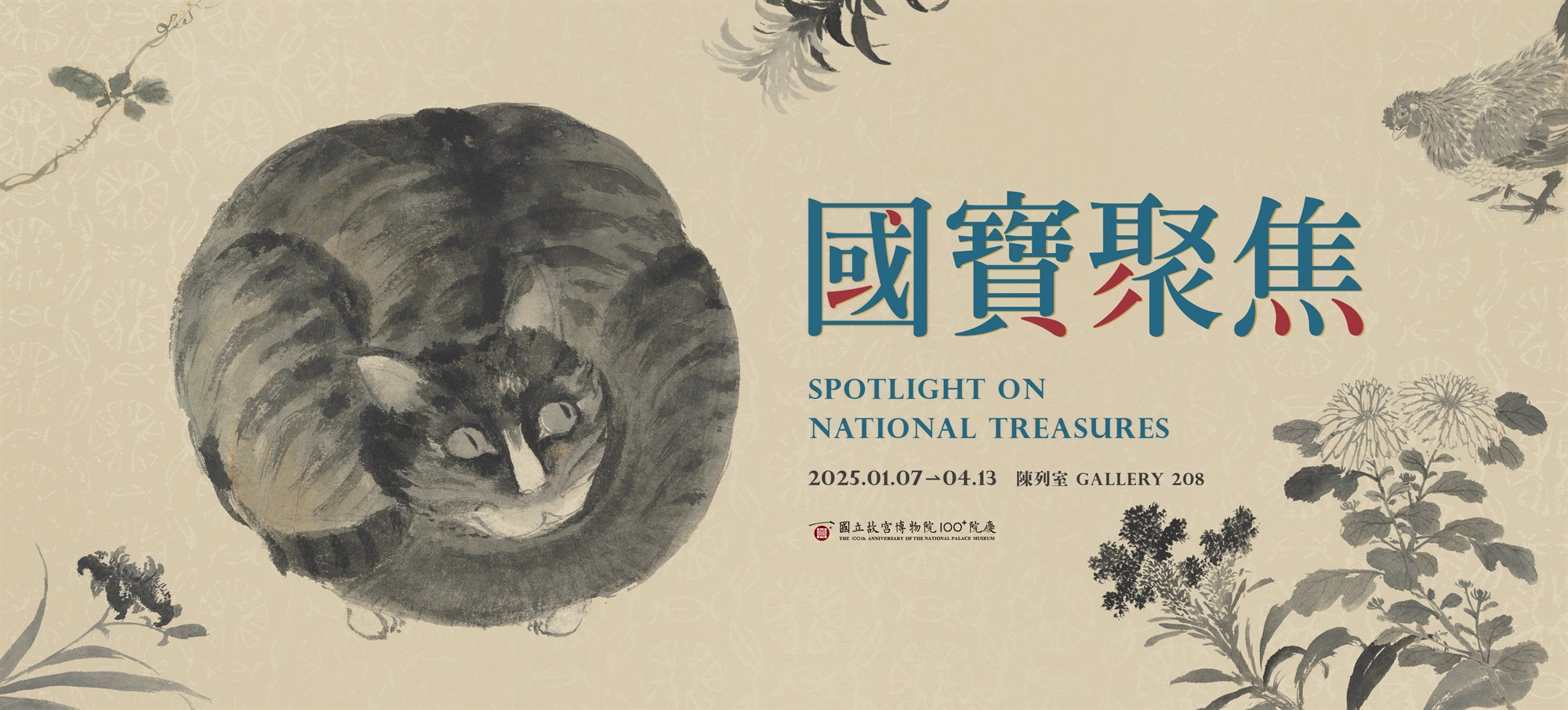Shen Zhou's Observation of Nature (plant)
-
A Magnolia TreeThe background of this painting was created using a pale green wash that serves to accent the Yulan magnolia’s (Yulania denudata) pure whiteness. Shen Zhou used rounded turns of the brush’s fine tip to create the lines that convey the flower petals’ delicate texture. He also used brushwork with short, abrupt, angular corners to portray the plant’s stems and twigs, allowing them to contrast with the blossoms in a refreshingly elegant way. Shen wrote numerous poetic odes to Yulan magnolia, extolling the flower’s other-worldly aroma. One of his poems, entitled “Cultivating Yulan Magnolia,” reveals Shen’s love for both planting as well as appreciating these flowers.
-
Day LilyIn this piece, Shen Zhou used the unoutlined “boneless” (mogu) painting technique to portray a flower and its sword-like leaves. The flower’s petals were rendered using layered ink washes, while its leaves were painted with a calligraphic technique called “flying white” (feibai) that lets negative space appear wherever the brush’s bristles separate. The brushwork is both fluid and natural.
Orange day-lilies (Hemerocallis flava) are often used to symbolize a mother’s compassionate love. Ming dynasty literatus Cheng Minzheng’s Huangdun Literary Compilation records that Shen Zhou once painted a work on behalf of a friend called “Appreciating Orange Day-lily,” which was meant as an expression of filial piety. -
GrapesThe grapes in this work have subtly pale coloration, and each individual fruit is clearly delineated. The bunch hangs down from the middle of a length of vine. Shen Zhou used differences in the sizes of the leaves as well as changes in the sizes of grapes near and far from the viewer so as to create a sense of layered space. Shen once wrote a poem entitled “Wen Riguan’s Grapes.” Wen Riguan, who lived during the late Song and early Yuan dynasties, was a painter and Buddhist monk who excelled at portraying grapes. This poem tells us Shen Zhou paid close attention to painterly depictions of grapes.
-
Chrysanthemum Drawn from LifeThis painting depicts a diagonal branch laden with autumn-blooming chrysanthemums, painted with lively brushwork and positioned in a charming manner. Shen Zhou wrote numerous paeans to chrysanthemums that took inspiration from the Jin dynasty poet Tao Yuanming’s classic line about “picking chrysanthemums by the eastern hedge.” Shen raised these flowers at home, too, and once wrote a poem called “Cultivating Chrysanthemums” in which he described how to identify varietals by their leaves, how to irrigate the plants, and other aspects of floriculture. Shen so loved these flowers that even when he was ill he picked chrysanthemums to place in vases and write poetic odes about. His devotion indicates how fashionable these blossoms were among the scholars of his day.
-
CockscombThe positioning of the flowering plant in this painting is similar to that seen in the leaf entitled “Chrysanthemum,” as both painted subjects extend out of their frames diagonally and to the right. This piece features simple, efficient brushwork and bold, luscious ink washes. In order to create a sense of spatial depth, Shen Zhou painted the stem so that it would taper from right to left, and also alternated between using dark and pale hues in his ink.
Crested cock’s-comb (Celosia cristata) generally blooms in the summertime. Shen Zhou once wrote a poem describing how these unusual flowers, which grew in his courtyard, indeed look like a rooster’s comb. The poem cleverly points out how, despite the flower’s appearance, it cannot actually cock-a-doodle-do. This work gives insight into Shen’s gentlemanly pastime of observing and enjoying the flowers and animals surrounding his home.


